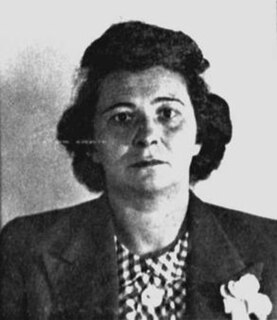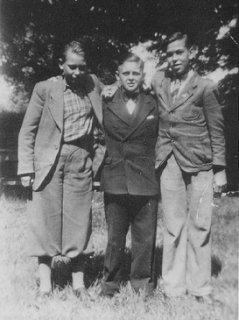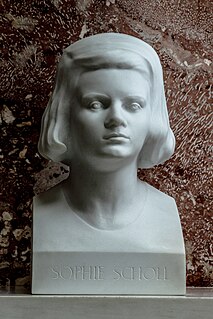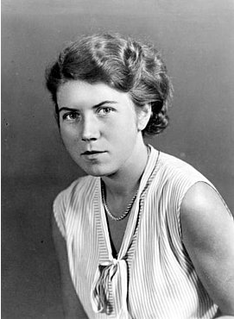 W
WAlojs Andritzki was a German Roman Catholic priest. He was ordained as a priest just prior to the beginning of World War II in which he became a vocal critic of the Nazi regime and its actions; this earned him their ire and he was arrested before being sent to the Dachau concentration camp where he was administered a lethal injection.
 W
WCato Bontjes van Beek was a German member of the Resistance against the Nazi regime.
 W
WWilhelm Bernardo Walter Cramer was a German businessman from Leipzig and a member of the failed 20 July Plot to assassinate Adolf Hitler at the Wolf's Lair in East Prussia.
 W
WJakob Gapp was an Austrian Roman Catholic priest and a professed member from the Marianists. Gapp first served as a soldier on the Italian front during World War I at a point in his life where his religious convictions were not of high importance, though his return home from a prisoner of war camp saw him develop socialist views that soon bought him into contact with the Marianists whom he later joined. After studies and ordination he was assigned in Austria as a teacher, where he became noted for his vehement opposition to the Nazi regime; he deemed Nazism as being some warped political tool to create division which was also incompatible with the faith.
 W
WLudwig Gehre was an officer and resistance fighter involved in the preparation of an assassination attempt against Adolf Hitler.
Carl Albert Fritz Michael Gerlich was a German journalist and historian, and one of the main journalistic resistors of Adolf Hitler. He was arrested, later killed and cremated at the Dachau concentration camp.
 W
WCarl Friedrich Goerdeler was a monarchist conservative German politician, executive, economist, civil servant and opponent of the Nazi regime. He opposed some of the anti-Jewish policies while he held office and was opposed to the Holocaust.
 W
WFritz Hermann Goerdeler was a German jurist and resistance fighter.
 W
WWilhelm Graf was a member of the White Rose resistance group in Nazi Germany. Followers of the Catholic Church in Germany regard Graf as a martyr.
 W
WKarl Gröger was a member of a Dutch resistance group executed in 1943.
 W
WGeorg Groscurth, was a German doctor and member of the resistance to Nazism in the time of the Third Reich.
 W
WNikolaus Gross was a German Roman Catholic. Gross first worked in crafts requiring skilled labor before becoming a coal miner like his father while joining a range of trade union and political movements. But he soon settled on becoming a journalist before he got married while World War II prompted him to become a resistance fighter in the time of the Third Reich and for his anti-violent rhetoric and approach to opposing Adolf Hitler. He was also one of those implicated and arrested for the assassination attempt on Hitler despite not being involved himself.
 W
WOtto and Elise Hampel were a working-class German couple who created a simple method of protest against Nazism in Berlin during the middle years of World War II. They wrote postcards denouncing Hitler's government and left them in public places around the city. They were eventually caught, tried, and beheaded in Berlin's Plötzensee Prison in April 1943. Shortly after the end of the war, their Gestapo file was given to German novelist Hans Fallada, and their story inspired his 1947 novel, translated into English and published in 2009 as Every Man Dies Alone. The story was filmed in 2016 as Alone in Berlin.
 W
WElli Hatschek was a member of the German Resistance against Nazism. She was married to Paul Hatschek, a leading member of the resistance group, the European Union and who was arrested by the Gestapo in 1943. Under heavy interrogation, he gave up the names of others in his group, who were then arrested. His wife was also arrested. Though she was not heavily involved, she was charged with "undermining the morale of the military" and was sentenced to death. She was executed by the Nazis at Plötzensee Prison.
 W
WElse Himmelheber was a German resistance activist during the Nazi years. She was executed (shot) at the Dachau concentration camp on 30 November 1944.
 W
WHelmuth Günther Guddat Hübener, was the youngest opponent of the Third Reich to be sentenced to death by the Special People's Court (Volksgerichtshof) and executed.
 W
WKurt Huber was a university professor and resistance fighter with the anti-Nazi group White Rose. For his involvement he was imprisoned and guillotined.
 W
WFranz Jägerstätter was an Austrian conscientious objector during World War II. Jägerstätter was sentenced to death and executed for his refusal to fight for Nazi Germany. He was later declared a martyr and beatified by the Catholic Church.
 W
WMarianne Joachim was a Jewish German resistance activist during the Nazi years. She was executed at Plötzensee on 4 March 1943 following an arson attack the previous summer on the party propaganda department's "Soviet Paradise" exhibition in Berlin's "Lustgarten" pleasure park.
 W
WMaria Restituta Kafka was an Austrian nurse of Czech descent and religious sister of the Franciscan Sisters of Christian Charity. Executed by the government in Nazi-run Austria, she was declared a martyr and beatified by the Catholic Church.
 W
WKarl Friedrich Stellbrink was a German Lutheran pastor, and one of the Lübeck martyrs, guillotined for opposing the Nazi regime of Adolf Hitler.
 W
WErich Klausener was a German Catholic politician who was killed in the "Night of the Long Knives", a purge that took place in Nazi Germany from 30 June to 2 July 1934, when the Nazi regime carried out a series of political murders.
 W
WMaximilian Kolbe, venerated as Saint Maximilian Kolbe, was a Polish Catholic priest and Conventual Franciscan friar who volunteered to die in place of a stranger in the German death camp of Auschwitz, located in German-occupied Poland during World War II. He had been active in promoting the veneration of the Immaculate Virgin Mary, founding and supervising the monastery of Niepokalanów near Warsaw, operating an amateur-radio station (SP3RN), and founding or running several other organizations and publications.
 W
WBlessed Carl Lampert was an Austrian Roman Catholic priest who served as the Pro-Vicar for the Diocese of Feldkirch in addition to being an outspoken critic of Nazism during World War II. This led to constant surveillance against him and his eventual arrests on several occasions. This all culminated with his final arrest in 1943 and his death from the guillotine in 1944 alongside a fellow Christian prisoner.
 W
WHans Conrad Leipelt was a member of the White Rose resistance group in Nazi Germany.
 W
WLudwig Freiherr von Leonrod was a German Army officer who took part in the 20 July plot to kill Adolf Hitler.
 W
WWilhelm Leuschner was a social-democratic politician who opposed the Third Reich.
 W
WHerta Lindner was a member of the German resistance against Nazism in occupied Czechoslovakia. She was born in 1920 into a German-speaking family in Mariaschein, Czechoslovakia. She joined the Socialist Youth of Germany – Falcons at a young age. Lindner and her family opposed the Sudeten German Party.
 W
WGertrud Lutz was a German resistance activist. She died by shooting at the Dachau concentration camp.
 W
WKurt Nehrling was a German Social Democratic politician and member of the German resistance against Hitler. Nehrling was responsible for supplying information to the Soviet Union and hid banned books. He was later caught by the SS and killed at the Dachau concentration camp.
 W
WHans Paul Oster was a general in the Wehrmacht of Nazi Germany and a leading figure of the German resistance from 1938 to 1943. As deputy head of the counter-espionage bureau in the Abwehr, Oster was in a good position to conduct resistance operations under the guise of intelligence work; he was dismissed for helping Jews avoid arrest.
 W
WJohannes Popitz was a Prussian finance minister and a member of the German Resistance against the government of Nazi Germany. He was the father of Heinrich Popitz, an important German sociologist.
 W
WAdalbert Probst was a Catholic Youth leader in Germany during Nazi period. He was killed during Hitler's 1934 Night of the Long Knives purge. Probst was national director of the Catholic Youth Sports Association. The Catholic Church in Germany had resisted attempts by the new Nazi Government to close its youth organisations. Probst, along with Erich Klausener and Fritz Gerlich were among the high-profile Catholic opposition figures targeted for assassination in the Night of the Long Knives of the summer of 1934, an early effort by Hitler to assert his dominance of German politics through violence. Probst was abducted and later found dead, allegedly "shot while trying to escape".
 W
WChristoph Ananda Probst was a German student of medicine and member of the White Rose resistance group.
 W
WGalina Romanova was a Ukrainian doctor who was deported to Germany during World War II to provide medical care for forced laborers. She became involved with the German resistance against Nazism and was executed at Berlin-Plötzensee prison.
 W
WWerner Scharff was a Jewish-German resistance activist against the Nazi regime. He was executed in Sachsenhausen concentration camp because of his activities in the "Community for Peace and Development" (German: "Gemeinschaft für Frieden und Aufbau"), which he founded together with Hans Winkler in Luckenwalde.
 W
WBartholomäus (Barthel) Schink was a member of the Edelweiss Pirates, active in the Ehrenfeld Group in Cologne, which resisted the Nazi regime. He was among the 12 members of that group who were publicly hanged in Cologne by the Gestapo on 10 November 1944. Although they were not tried, the group was accused of killing five people and planning an attack on the EL-DE Haus, the local Gestapo headquarters.
 W
WKurt Ferdinand Friedrich Hermann von Schleicher was a German general and the last Chancellor of Germany during the Weimar Republic. A rival for power with Adolf Hitler, Schleicher was murdered by Hitler's SS during the Night of the Long Knives in 1934.
 W
WAnton Schmid was an Austrian recruit in the Wehrmacht who saved Jews during the Holocaust in Lithuania. A devout but apolitical Roman Catholic and an electrician by profession, Schmid was conscripted into the Austro-Hungarian Army during World War I and later into the Wehrmacht during World War II. Put in charge of an office to return stranded German soldiers to their units in late August 1941, he began to help Jews after being approached by two pleading for his intercession. Schmid hid Jews in his apartment, obtained work permits to save Jews from the Ponary massacre, transferred Jews in Wehrmacht trucks to safer locations, and aided the Vilna Ghetto underground. It is estimated that he saved as many as 300 Jews before his arrest in January 1942. He was executed on 13 April.
 W
WAlexander Schmorell was a Russian-German student at Munich University who, with five others, formed a resistance group known as White Rose which was active against the Nazi German regime from June 1942 to February 1943. In 2012, he was glorified as a saint and passion bearer by the Russian Orthodox Church Outside Russia.
 W
WHans Fritz Scholl was a founding member of the White Rose resistance movement in Nazi Germany. He was executed by the Nazi regime during World War II.
 W
WSophia Magdalena Scholl was a German student and anti-Nazi political activist, active within the White Rose non-violent resistance group in Nazi Germany.
 W
WLibertas Schulze-Boysen, born Libertas Viktoria Haas-Heye was a German resistance fighter who was a member of the Berlin based anti-fascist resistance group that was later called the Red Orchestra by the Abwehr, during the Third Reich.
 W
WIlse Stöbe was a German journalist and anti-Nazi resistance fighter.
 W
WMaria Terwiel was a German resistance fighter who was a member of the anti-fascist resistance group that was later called the Red Orchestra by the Gestapo.